Da Nang has many mountain temples where handmade architecture, natural sceneries and religious values are combined perfectly. So, travelers will see, enjoy and learn a lot about different things just within a visit, to any of them. Above all, the Marble Mountains has most pagodas because it’s one of the best known scenic landscapes in the country. The earliest-constructed one there (19th century) is named Linh Ung, meaning “wishes answered miraculously”. In recent decades, its two younger sisters were born in Ba Na Hills – to the west and Son Tra Peninsula – to the east. Citizens think that the trio of Linh Ung Pagoda shelters them from natural disasters, such as yearly typhoons. This guide names every mountain temple in Da Nang and gives information about each.
Read also:

Table of content
- 1 Why are Vietnamese Buddhist Temples built in the Mountain?
- 2 Tam Thai Pagoda Marble Mountains
- 3 Linh Ung Pagoda Marble Mountain (Non Nuoc Pagoda)
- 4 Tu Tam Pagoda
- 5 Tam Ton Pagoda
- 6 Quan The Am Pagoda
- 7 Linh Ung Pagoda Son Tra Peninsula
- 8 Linh Ung Pagoda Ba Na Hills
- 9 Linh Phong Thien Tu Pagoda Ba Na Hills
- 10 Linh Chua Linh Tu Temple
- 11 Truc Lam Bach Ma Zen Monastery
- 12 Thanh Duyen Pagoda
- 13 Related Posts
- 14 Non Nuoc Beach: The Famous Beach of Da Nang
- 15 How to Get from Da Nang to My Son Sanctuary
- 16 Bach Ma National Park: Hiking, Trekking in Da Nang and Hoi An
- 17 Am Phu Cave Complete Travel Guide
- 18 Asia Park and Sun Wheel in Da Nang (Sun World Da Nang Wonders)
- 19 How to Get to Golden Bridge from Da Nang
- 20 Da Nang Food Specialties: What to Eat in Da Nang
- 21 How to Visit Golden Bridge Vietnam
- 22 Da Nang Shore Excursions: Guided Tours From Tien Sa Port
- 23 Han Market (Cho Han): Where to Shop in Da Nang?
- 24 Da Nang Cathedral (Da Nang Pink Church)
- 25 Things to Do in Ba Na Hills Besides Golden Bridge
- 26 Da Nang Half Day Tours
- 27 Da Nang Private Car and Driver
- 28 Da Nang and Hoi An Itinerary for Visitors Staying Overnight in Hoi An
- 29 Da Nang Things to Do: Guide to What to Do in Da Nang Vietnam
- 30 Da Nang Best Things to Do and Reasons
- 31 How to Get From Hoi An to Da Nang
- 32 Hoi An or Da Nang: Which is Better?
- 33 My Son Sanctuary Tour
- 34 Da Nang Best Area to Stay: Guide to Where to Stay in Da Nang
- 35 Da Nang Cave Tour: Best Underground Activities in Da Nang
- 36 Da Nang Best Time to Visit: Guide to Best Weather in Da Nang
- 37 Da Nang Weather by Month: Guide to Monthly Weather in Da Nang
- 38 What to Do in Da Nang At Night
- 39 Lang Co Vietnam Travel Guide
- 40 What to Do in Da Nang for 3 Days
- 41 My Khe Beach: A Complete Guide to Da Nang’s Best Beach
- 42 Da Nang Day Trips: Guide to Best Day Tours From Da Nang
- 43 Museums in Da Nang
- 44 Linh Ung Pagoda: Trio of Da Nang’s Holiest Mountain Temples
- 45 Da Nang Night Market: A Thing To Do in Da Nang at Night
- 46 Guide to Son Tra Mountain aka Monkey Mountain Vietnam
- 47 Ba Na Hills Tour
- 48 Da Nang Cable Car
- 49 How to Get from Da Nang Airport to Hoi An
- 50 Da Nang to Hoi An: Best Da Nang Airport Transfer and More
- 51 Hai Van Pass Da Nang: Map, Route, Weather, History, Tour
- 52 Da Nang Attractions Guide: What to See in Da Nang Vietnam?
- 53 Lady Buddha Da Nang: The Best of Monkey Mountain Vietnam
- 54 My Son Sanctuary Travel Guide
- 55 Da Nang Museum of Cham Sculpture
- 56 Dragon Bridge Da Nang: The Fire-Breathing Da Nang Bridge
- 57 Ba Na Hills Travel Guide: A First Timer’s Complete Guide
- 58 Golden Bridge Da Nang: A Guide to The Iconic Da Nang Bridge
- 59 Da Nang Bridge: A Guide to Famous Bridges in Da Nang
- 60 Ba Na Hills Cable Car: World Record, Cost, Reschedule, Map
- 61 Da Nang Mountain Temple: Marble Mountain’s Pagodas, More
- 62 Da Nang Caves: Underground World of the Marble Mountains
- 63 The Marble Mountains: Guide to Da Nang’s Iconic Mountain
- 64 Featured Tours and Experiences
- 64.0.1 Golden Bridge and Ba Na Hills Night Tour
- 64.0.2 Golden Hands Bridge Tour In Sunrise or Sunset (1/2 Day)
- 64.0.3 Cam Kim Island Bicycle Tour From Hoi An
- 64.0.4 Cham Island Tour From Hoi An (Group Tour)
- 64.0.5 Cham Island Tour From Da Nang (Group Tour)
- 64.0.6 Hoi An Vegetarian Food Tour
- 64.0.7 Hoi An Evening Walking Food Tour Through Laneways
- 64.0.8 Private Hoi An Basket Boat Tour (Shuttle Bus, Bicycle, Bike)
- 64.0.9 Half-day Am Phu Cave Tour (Private)
- 64.0.10 Hoi An Countryside Tour (Bicycle, Car, Electric Shuttle)
- 64.0.11 Da Nang Tour Package From Singapore
- 64.0.12 Hoi An Evening Tour From Da Nang
- 64.0.13 Hoi An Walking Food Tour Through Laneways
- 64.0.14 My Son Sanctuary and Hoi An Old Town Tour with Thu Bon River Cruise
- 64.0.15 My Son Day Trip From Hoi An including Marble Mountains and Basket Boat
- 64.0.16 Half Day Hoi An City Tour With River Cruise
- 64.0.17 Son Tra Peninsula Tour with Marble Mountains (Private/Small Group)
- 64.0.18 Hue Day Trip From Hoi An with Hai Van Pass, River Cruise & Lunch
- 64.0.19 Hoi An Ancient Town and Countryside Tour (Bests of Hoi An Tour)
- 64.0.20 Hoi An Tour From Da Nang Airport (Private, Optional Lunch)
- 64.0.21 Hoi An Day Trip From Da Nang (Marble Mountains, Basket Boat, Old Town)
- 64.0.22 Da Nang City Tour From Airport (Private, Optional Lunch)
- 64.0.23 Hoi An City Tour with Lantern Class, Lantern Boat, Night Market & Local Food Sampling
- 64.0.24 Marble Mountains, Basket Boat Ride & Hoi An Old Town Walking Tour
- 64.0.25 Marble Mountains & Golden Bridge Day Tour with Buffet Lunch
- 64.0.26 Marble Mountains & Monkey Mountain Tour (Half-day, Private)
- 64.0.27 Private Golden Bridge Sunrise Tour (Half-day, Optional Lunch)
- 64.0.28 Hoi An Ancient Town & Golden Bridge Day Tour (Private/Small Group)
- 64.0.29 My Son Sanctuary & Golden Bridge Day Tour (Private/Small Group)
- 64.0.30 Private My Son Sanctuary Sunrise or Sunset Tour
- 64.0.31 Full Day Hoi An Ancient Town & Countryside Experience With Local
- 64.0.32 Full Day My Son Sanctuary & Hoi An Countryside Tour With Local
- 64.0.33 Full Day Hoi An Ancient Town & Coconut Village Experience
- 64.0.34 Son Tra Peninsula, Marble Mountains and Hoi An City Tour
- 64.0.35 Half-day Marble Mountains Tour from Da Nang or Hoi An
- 64.0.36 Da Nang Cave Tour (Half Day Underground Tour in Da Nang)
- 64.0.37 Hoi An Old Town & Lantern Making Class (Morning Tour, Half-day)
- 64.0.38 Full Day Bests of Da Nang & Hoi An Old Town Walking Tour
- 64.0.39 Full Day My Son Tour From Da Nang with Da Nang City Tour
- 64.0.40 My Son Sanctuary Tour From Hoi An or Da Nang With Local Guide
- 64.0.41 Hue Day Trip from Da Nang or Hoi An via Hai Van Pass with Lunch
- 64.0.42 Full Day Golden Bridge & Ba Na Hills Tour With Buffet Lunch
- 64.0.43 Full Day My Son Sanctuary Tour & Hoi An Old Town With Local
- 64.0.44 Half Day Da Nang Museums and Bridges
- 64.0.45 Da Nang City Discovery
- 64.0.46 Da Nang at a Glance (The Best Half Day Da Nang City Tour)
- 64.0.47 Full-day My Son Tour From Da Nang or Hoi An & Marble Mountains
Why are Vietnamese Buddhist Temples built in the Mountain?
Not only in Da Nang, lots of pagodas in Vietnam are built in the mountains. The main reason is their isolation from villages and cities where people reside. Thanks to that, the monks are able to focus on practicing Buddha teachings. Unlike today, they live in caves or bamboo huts with a thatch roof. Foods, fresh water, medical plant and cool temperature are ideal conditions to have a long-term stay. In addition, the peaks provide beautiful sceneries, and represent “the havean” in traditional thoughts. Mountainfoot, valley, slope or summit locations are up to the purposes of the builders (monks or Buddhist associations) and feng shui geomancy principles. Although far away from residential areas, the contact doesn’t lose, because the monks sometimes trek down the mountain for duties and seek food. People (especially Buddhism followers) also climb up there to meet the monks and pray in front of Buddhas.

Tam Thai Pagoda Marble Mountains
Tam Thai Pagoda History
Thuy Son has three grades of elevation called Ha Thai, Trung Thai and Thuong Thai. All are shortly known as Tam Thai (“Three Thai”) which is the name of this pagoda. It’s a group of stars in the sky as well and officially called today although renamed several times in its existence. Locals say Chua Trong (“The inner pagoda”) for it and Chua Ngoai (“The outer pagoda”) for Linh Ung Pagoda on the other side of the mountain. The Tree Thai also appears in many Buddhist texts and philosophy.
History of Tam Thai Pagoda starts from the first half of the 17th century. The time was mentioned in the rock inscriptions carved on a cave wall nearby. Historians say the correct year is 1630 but may be earlier. In 1695, famous Chinese monk Thich Dai San visited it and shared memories and stories here in his own chronicle later. He traveled to Vietnam by the invitation of Nguyen Phuc Chu lord, a ruler who is passionate in Buddhism. Up to date, there are 16 generations of monks practicing the Buddha teachings here.
This gem was constructed first by woods and thatch, like the siste temple Linh Ung. To stand better before annual typhoons, bricks and tiles are choosen to replace then. In 1825, the 2nd Nguyen dynasty king Minh Mang requested that and the construction was done fast. He titled it as a national pagoda, to affirm its importance in local Buddhist culture and give thanks to the Buddha who saved his father. Current architecture is from the reconstruction in 1995.
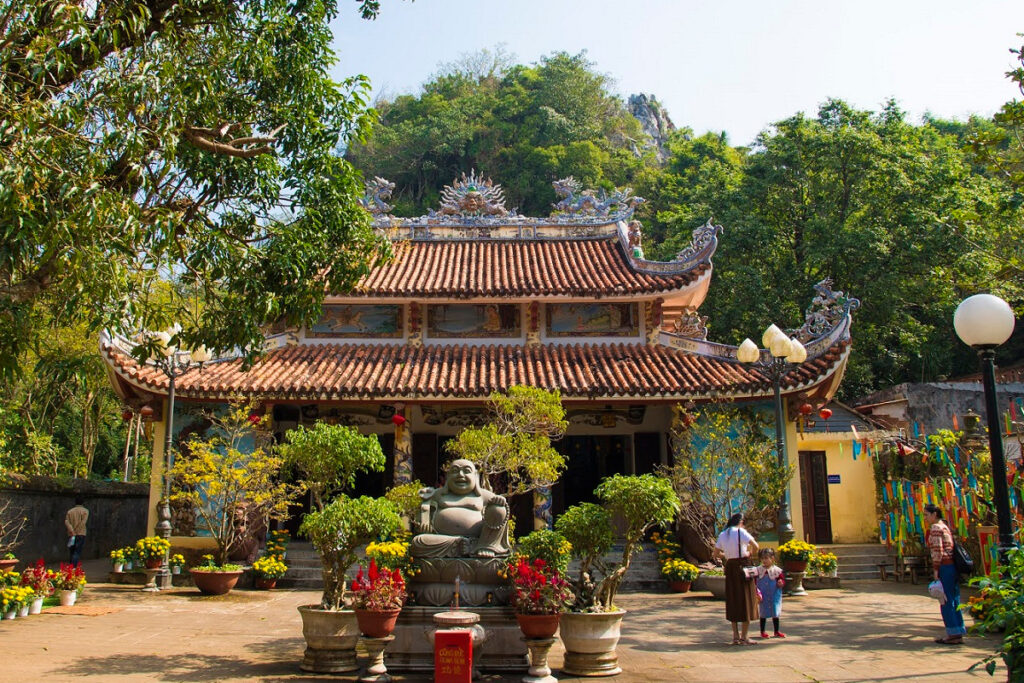
Promise of Gia Long King
Minh Mang king built the Tam Thai pagoda to fulfill the promise of his father, the Founder of Nguyen dynasty Gia Long. The creator stopped in it while hiding from the chase of Tay Son troops, the enemy. At the time, he was so thirsty and clasp hands to pray to the Buddha that if have water to drink to survive, he would come back to build a temple to give thanks. In 1802, he’s crowned in Hue citadel. Because of being responsible for ruling a young country, so much emergency to complete, he couldn’t keep promise. Before going to the next world, he reminded his successor (son) to do it on behalf of him. Shortly then, the promise becomes reality. Locals use the sentence “Gia Long promises, Minh Mang establishment” to describe this historic story.
Story of Minh Mang King’s Sister
The life of Minh Mang king’s younger sister also is linked to Tam Thai Pagoda. She had a happy family and some childrens but after many sorrows, decided to be a nun, live in the mountains and practiced Buddha teaching. Although the king’s brother and other royal members advised her to return to the capital to enjoy luxuries, she disagreed. Moreover, this beautiful woman composed a poem and dared to tell people that if someone continues the words, she will be back. The house where the princess stayed is by the pagoda, with the main entrance near the old mango tree.
A Visit in Tam Thai Pagoda
Tam Thai Pagoda is a must-visit place in Thuy Son, not only because of its interesting history. Its architecture also stands out, expressing the talent of artists and the thoughts of people in 19th century. The most ornate building is the Buddha hall which stands on a flat terrace, behind a Laughing Buddha statue. The façade exhibits a wealthy decoration created by the most expensive materials of the time. The roof is covered by ceramic yinyang tiles, encrusted with four Vietnamese holy animals and birds (dragon, turtle, phoenix and unicorn). The details are hand-crafted by small ceramic pieces broken from jars, pots, plates or bowls. Colorful paintings between the roof and doors depict three different stages in Buddha’s life in India.
Inside the first room of Tam Thai pagoda (for praying), the Buddha in Three Times is worshiped. Each Buddha represents the past, present and future. Used for monks only, the Ancestor room behind it houses many ancient artifacts, including 6 bells, 2 statues brought from Huyen Khong cave nearby (for better preservation). The most precious one is Qua tim lua (“the Fire heart”), a bronze Buddha leaf given by Minh Mang king as a gift. The emperor left his hand-written inscriptions on it. That makes it special, and Da Nang’s authorities have been submitting it to be a national treasure.
If trekking up the mountain by Gate 1, the Three-arched Gate is the first structure sightseers will see. It has a simpler design than the main shrine, but is proud of being intact from its day of formation, 19th-century. Small marble stele on its top is unique in Da Nang and reveals information about an ancient Vietnamese custom (gửi giỗ). In detail, that provides a list of people and how much money they gave to the monks. After they pass away, the monks use the money to buy fruits and incense to “send” to the next world. The givers often are without biological childrens or have got married yet.
Near the Three-arched gate, sightseers can rest on the stone chairs in the shade of two big country almonds. The left-sided tree is 240 years old, symbolizing a man and the other is 350 years ago, symbolizing a woman. Locals do believe that single persons will soon find a proper family partner after touching on both trees and praying in the pagoda. In 2017, both trees were rewarded as Vietnam’s heritage trees.

Linh Ung Pagoda Marble Mountain (Non Nuoc Pagoda)
Location: Hon Thuy Son “Water Mountain” in The Marble Mountains – Entrance ticket: 40,000 VND (free in 2022)
This is the oldest temple in the Marble Mountains where the first monk resided and practiced Buddha teachings. After 108 steps from the sculpture village, visitors will see richly-decorated shrines, colorful entrance gate, Buddha in zen style, Lady Buddha pavilion amid the carp pond, monk tombs, and old trees. Within the central worshipping space, the Buddhha of Three Times are honoured. In the back of it, the tunnel leads to the majestic chambers of Tang Chon Cave. See further details in our guide for all Linh Ung Pagoda in Da Nang.

Tu Tam Pagoda
Established in the second half of 15th century by a northern-people monk of the same name, this pagoda is near Tam Thai pagoda. At that time, it’s built of wood and thatch, to worship the Buddha and practice his teachings. Because of conflicts between two military powers, it’s destroyed and until the visit of Minh Mang king in 1825, it’s reconstructed but with better materials. Today, Ksitigarbha Buddha is venerated here, besides typical personalities in different Vietnamese dynasties and wandering souls. There is no leader monk in it, and the one in a nearby temple has been responsible for all duties. After being highly-damaged in the Vietnam war, several renovations occurred. In the same ground, some small buildings are also added.
Tam Ton Pagoda
Near the pavilion overlooking the river (Giang Vong Dai), this pagoda originally is the place where monks in Tam Thai pagoda relax and sleep. In 1973, the leader monk of Tam Thai pagoda requested to stay here to enjoy the rest of his life and upgraded the house to a temple. Its name is taken from Di Da Tam Ton “Buddha of the Three Times”. Today, it still preserves 3 horizontal lacquered boards made in 1900 and 7 sutra woodblocks. Different from the neighbor Tu Tam pagoda, an independent monk is at the head of here.

Quan The Am Pagoda
Location: Hon Kim Son “Metal Mountain”, Ngu Hanh Son – Entrance ticket: free
This pagoda was established in 1957 by Thich Phap Nhan monk after his dream in which Lady Buddha appeared. She also told him how to find a rock formation with the shape similar to her (he found then). In the same year, he shared the story and celebrated a festival to honour the Buddha. The 19th day of the second month is chosen to be the official time to hold. Over the years, monks, followers and pilgrims visit the temple and attend the festival (called Lễ hội Quán Thế Âm) more and more. Therefore, since 2000, the event has been extended by 2 days and listed in the top 15 national festivals of Vietnam. Recently, it’s registered as the national intangible cultural heritage. See more information about this featured celebration in Da Nang’s festivals.
Construction of the new Quan The Am Pagoda is on-going, next to the former one. Although unfinished, some parts open for tourists, such as the Da Nang’s Museum of Buddhist Culture. It’s free to visit.
Linh Ung Pagoda Son Tra Peninsula
Location: Son Tra Peninsula, Tho Quang – Entrance ticket: free
This is the largest Buddhist site, the newest member of 3 Linh Ung Pagodas in Da Nang. It’s constructed from 2006 to 2010, on a low hill by the coast and overlooking the seafront. The best known thing here is the Lady Buddha (the Goddess of Mercy) that rises over 60 meters from the surroundings. Sculpted by artists from the Marble Mountains, she faces the city to shelter its citizens. Fishermans come to pray once setting sail to catch fishes. The Buddha halls are just nearby, featuring grand architecture with a harmonization between modern materials and traditional styles. Bonsai gardens, Bodhi trees, monkeys, Buddha statues, and great scenery (amazing sunset) are other things to expect. Read all you need to know before visiting in our traveler guide to Linh Ung Pagoda.

Linh Ung Pagoda Ba Na Hills
Location: Ba Na Hills – Entrance ticket: included in Ba Na Hills ticket
This pagoda was built from 1999 to 2004 by the request of Thich Thien Nguyen – the monk leader of the Marble Mountains and Nguyen Ba Thanh – the reigning president of Da Nang. It aims to foster the growth of tourism in Ba Na Hills, the former hill station of France before the World War I. On a slope by flower gardens and the new wonder Golden Bridge, it has a Buddha hall, three-arched entrance gate and a 37-meters Gautama Buddha. See details in our ultimate guide to Linh Ung Pagoda in Da Nang.

Linh Phong Thien Tu Pagoda Ba Na Hills
Location: Ba Na Hills – Entrance ticket: included in Ba Na Hills ticket
Located on a piece of land near Nui Chua peak, this Buddhist site is constructed by iron wood, in Northern Vietnam style. Thanks to being away from tourist trails, it’s so quiet, even during the high seasons. Statues of arhats (la hán), ornate worshipping altar with Buddhas, and breath-taking view over untouched mountain ranges are highlights here.
Linh Chua Linh Tu Temple
Location: Ba Na Hills – Entrance ticket: included in Ba Na Hills ticket
On the top of Da Nang – Nui Chua summit at an elevation of 1,487 meters, this temple is for worship of the Goddess of the Mountains and Forests. In traditional belief, she rules the area and so, people honour her here to pray for peace, good weather or prosperity. In the temple, visitors can see snakes – representation for growth and power. Before walking in, long sarongs are available near the doors to wear to express the respect to the gods. In the front and to the left, the Bell pavilion allows visitors to view the entire French Village from above. Sculptures of La hán (arhats) are placed around, made by artists in the Marble Mountains. Many Asians put money around to pray for luck. In a lower terrace, the tower is another highlight, with 4 guardians at each corner.
Truc Lam Bach Ma Zen Monastery
Location: Loc Hoa, Phu Loc – Entrance ticket: free
Truc Lam Bach Ma Zen Monastery (or Thiền viện Trúc Lâm Bạch Mã) is the first of its kind in the region. It’s an official monastery of Truc Lam Zen Buddhism invented in 14th century that is the first and only line of Vietnamese Buddhism today. Constructed in 2006, this building has grand architecture sitting atop a hill by a scenic reservoir and surrounded by forests of Bach Ma National Park. Different from any mountain temples, visitors need to get on a boat to get there. Read further details in our guide to Truc Lam Bach Ma Zen Monastery.
Thanh Duyen Pagoda
Location: Vinh Hien, Phu Loc – Entrance ticket: free
This hilltop Buddhist temple was built first in the second half of 17th century, reconstructed and renovated many times then. The last time was in 1936 under the reign of Minh Mang king. He added several new structures, a tower and changed its name from Thuy Ba to Thanh Duyen. Meanwhile, he titled it as “national pagoda” (quốc tự), similar to two temples in the Marble Mountains. A place in the list plays an important role in the growth of Buddhism in the country. Thanh Duyen pagoda’s surroundings are also beautiful, including fishing villages, boats on lagoon water, rocks, and pine forests. See more information in our guide to traveling Tam Giang Lagoon.
Related Posts
Non Nuoc Beach: The Famous Beach of Da Nang
Besides the Golden hands bridge – a global hit, Da Nang city also has beautiful beaches. If looking for somewhere great to stay and have a slow holiday, Non Nuoc
How to Get from Da Nang to My Son Sanctuary
Known as ‘the Angkor Wat of Vietnam’, My Son sanctuary boasts of its sophisticated temples dating back from 4th century. Sadly, in 14th century, it’s abandoned in the forests. Today,
Bach Ma National Park: Hiking, Trekking in Da Nang and Hoi An
Two best places for trekking and hiking in and near Da Nang are Son Tra mountain (peninsula) and Bach Ma national park. Which one is better is actually personal because these
Am Phu Cave Complete Travel Guide
Although in the Marble mountains – the most visited attraction in Da Nang, travelers often miss Am Phu cave. One of reasons is that it’s mentioned much online and not
Asia Park and Sun Wheel in Da Nang (Sun World Da Nang Wonders)
Have you ever seen the wheel of Da Nang? That is the Sun Wheel. It’s a part of greater Asia Park – an amusement park with a heap of fun
How to Get to Golden Bridge from Da Nang
The Golden Bridge (aka the Golden Hands Bridge) in Da Nang is a must visit attraction in Vietnam today. Many foreign travelers come to the city, just because they love
Da Nang Food Specialties: What to Eat in Da Nang
Da Nang is known as a food capital of central Vietnam. This city boasts many yummy dishes, prepared by distinctive recipes and some of them are famous all over the
How to Visit Golden Bridge Vietnam
The Golden Hand Bridge of Ba Na hills today is a dream place to visit for many travelers. Since it opened in June 2018, millions of people have set their
Da Nang Shore Excursions: Guided Tours From Tien Sa Port
Da Nang Vietnam today is one of stopovers for many cruises that travel from continent to continent, from country to country. It owns an ideal seaport to moor and it
Han Market (Cho Han): Where to Shop in Da Nang?
In the heart of Da Nang, the Han market is a popular place for visitors to buy something to bring home due to the diversity of merchandise. Back to history,
Da Nang Cathedral (Da Nang Pink Church)
Da Nang became a French protectorate on 3rd October 1888, under the name “Tourane”. By the Han river, the colonists designed a grid of streets with public buildings, a city hall,
Things to Do in Ba Na Hills Besides Golden Bridge
According to local authorities, 50% of visitors coming to Da Nang and Hoi An visit the Ba Na hills. In other words, that is nearly 10 millions of people. This
Da Nang Half Day Tours
In addition to day trips, travelers have many options of half-day tours in Da Nang to choose from. Not to spend a full day at different places, maybe far from
Da Nang Private Car and Driver
Your next holiday destination is Da Nang? You prefer to travel by yourself? Hiring a private car is one of the best options for you to explore with freedom, flexibility
Da Nang and Hoi An Itinerary for Visitors Staying Overnight in Hoi An
Da Nang and Hoi An are twin cities in the heart of Central Vietnam. Both are popular tourist destinations for either domestic or international visitors, and share many similarities. Due
Da Nang Things to Do: Guide to What to Do in Da Nang Vietnam
Unquestionably, Da Nang deserves a holiday trip from all types of traveller. Firstly, due to the weather. It has a longer sunny time than the north but less hot than
Da Nang Best Things to Do and Reasons
Da Nang is the largest tourist center in Central Vietnam. It owns fascinating natural and cultural places that attract both Vietnamese and foreigners. In the busiest year, this city of
How to Get From Hoi An to Da Nang
Da Nang is the neighbouring city of Hoi An. It's the capital of Central Vietnam and has the most important (busiest) transport hubs of the region, such as airport, train
Hoi An or Da Nang: Which is Better?
Da Nang and Hoi An are located in Central Vietnam, with a distance of roughly 30 km. To the north, Da Nang is the capital city of the region, with
My Son Sanctuary Tour
My Son Sanctuary is a Unesco world heritage site, attracting 450,000 visitors in recent years. It’s the best remains left by the fallen Champa Kingdom which ruled a part of
Da Nang Best Area to Stay: Guide to Where to Stay in Da Nang
In the Central coast, Da Nang has an area of 1,285 km2 and population of 1,134 people, making it become Vietnam’s 4th largest city. It plays an important role in the
Da Nang Cave Tour: Best Underground Activities in Da Nang
Different from Hue and Hoi An, Da Nang has limestone caves and grottoes. All of them are within the Marble Mountains (Ngu Hanh Son), a complex of 5 amazing hills
Da Nang Best Time to Visit: Guide to Best Weather in Da Nang
Da Nang is titled “Asia’s leading festival and event destination” by the World Travel Awards or Vietnam’s greenest city by the WWF. Its reputation comes from amazing natural mountain-to-sea sceneries,
Da Nang Weather by Month: Guide to Monthly Weather in Da Nang
In Central Vietnam, Da Nang has a tropical monsoon climate with two distinct seasons that each starts later than the North 2 months. Because of being shielded by the spectacular
What to Do in Da Nang At Night
Between the sunset and midnight, there are many things to do in Da Nang that travelers should know before getting to bed. Thankfully, different styles of traveling, budget or ages
Lang Co Vietnam Travel Guide
Lang Co was a lovely backwater town nestled at the foot of spectacular Hai Van Pass for some decades. Not yet widely known because of the popularity of beaches in
What to Do in Da Nang for 3 Days
Da Nang is a lovely coastal city in the middle of 3 Unesco world heritages Hue, Hoi An and My Son Sanctuary. This most worth-living municipality owns a poetic river
My Khe Beach: A Complete Guide to Da Nang’s Best Beach
Da Nang is a lovely seaside city with many beaches, and the best is My Khe. Located on the eastern coastline, it’s between little-known beaches near the foot of Son
Da Nang Day Trips: Guide to Best Day Tours From Da Nang
Centre and outskirts of Da Nang have incredible attractions where travellers need to spend many hours to get to and fully explore. There are the Ba Na Hills and Golden
Museums in Da Nang
Da Nang has many museums where visitors can see and learn a lot. Generally, their exhibitions have different themes, varying in stages of the history, groups of people (communities) having
Linh Ung Pagoda: Trio of Da Nang’s Holiest Mountain Temples
Linh Ung means “wishes answered miraculously” in Sino-Vietnamese. And it’s first used in 1841 to name a pagoda in the Marble Mountains by Thanh Thai, the 10th king of the
Da Nang Night Market: A Thing To Do in Da Nang at Night
Different from day markets in Da Nang, night markets are held open-air and on streets where traffic is active during sunny hours. A visit there provides the chance to understand
Guide to Son Tra Mountain aka Monkey Mountain Vietnam
From My Khe Beach or Han River promenades, tourists can see a part of the Son Tra Mountain. Although being near the city center, natural forests on its slopes have
Ba Na Hills Tour
Ba Na Hills is one of the best attractions in Da Nang, and the country. Its full name is the Ba Na-Suoi Mo Tourist Area, made from “Ba Na hill
Da Nang Cable Car
No surprise that now, when travelers make the plan to tour around Vietnam, there are many cable car rides recommended. Some are top things to do in its cities. The
How to Get from Da Nang Airport to Hoi An
Located in the city of the same name, Da Nang airport is the nearest airport to Hoi An. So, if travelers want to see an extremely-colorful Lantern festival or try
Da Nang to Hoi An: Best Da Nang Airport Transfer and More
If traveling to Hoi An by air, train and cruise ship, visitors will come to Da Nang first and then have a transfer. The largest city of Central Vietnam holds
Hai Van Pass Da Nang: Map, Route, Weather, History, Tour
Truong Son or Annamite Range is the most dramatic mountain ridge in Vietnam. When it juts out into the sea, spectacular Hai Van Pass is formed. This amazing sculpture of
Da Nang Attractions Guide: What to See in Da Nang Vietnam?
Da Nang is the capital city of the Central region, and one of the most attractive destinations to tourists in Vietnam. It’s established by French colonists and called by them
Lady Buddha Da Nang: The Best of Monkey Mountain Vietnam
From the East coast, visitors can see an enormous white statue with the mountain backdrop, that is the Lady Buddha Da Nang. Located in the ground of Linh Ung Pagoda,
My Son Sanctuary Travel Guide
My Son Sanctuary is a complex of Hindu temples and a Unesco world heritage site from 1999. It’s 40 km away from Hoi An and 70 km to the southwest
Da Nang Museum of Cham Sculpture
Da Nang Museum of Cham Sculpture is a highlight of the Han river waterfront. It’s established by French archaeologists to preserve intricate works of art of Champa kingdom, which ruled
Dragon Bridge Da Nang: The Fire-Breathing Da Nang Bridge
Praised to be the world's 30 most unique bridges recently, Dragon Bridge became the new icon for a Han river bridge in Da Nang. Spanning from the 100-years-old Cham Museum,
Ba Na Hills Travel Guide: A First Timer’s Complete Guide
50% of visitors to Da Nang plan to visit Ba Na Hills in their itinerary. It’s larger for first timers who may know about its inspirational Golden Bridge, world-record cable
Golden Bridge Da Nang: A Guide to The Iconic Da Nang Bridge
Recently-built but at the present time, the Golden Bridge Da Nang is one of the awaited attractions in Vietnam. On a slope of high foggy mountain, this delicate bridge and
Da Nang Bridge: A Guide to Famous Bridges in Da Nang
Da Nang has many bridges, and some of them are famous nationally and internationally. Before the recently-built Golden Bridge which made a boom in social media, people only knew bridges
Ba Na Hills Cable Car: World Record, Cost, Reschedule, Map
Cable car is one of the first ideas travelers think about Ba Na Hills, a Da Nang’s top attraction. It helps to shorten the time to get to the hills
Da Nang Mountain Temple: Marble Mountain’s Pagodas, More
Da Nang has many mountain temples where handmade architecture, natural sceneries and religious values are combined perfectly. So, travelers will see, enjoy and learn a lot about different things just
Da Nang Caves: Underground World of the Marble Mountains
One of the priceless gifts Mother nature gives to Da Nang is an array of caves and caverns. Almost all are located in the Marble Mountains, a complex of
The Marble Mountains: Guide to Da Nang’s Iconic Mountain
Had been an offshore group of islands, geological activities shifted the Marble Mountains to the land some thousands of years before. Today, its marble hills rise suddenly up to over 100







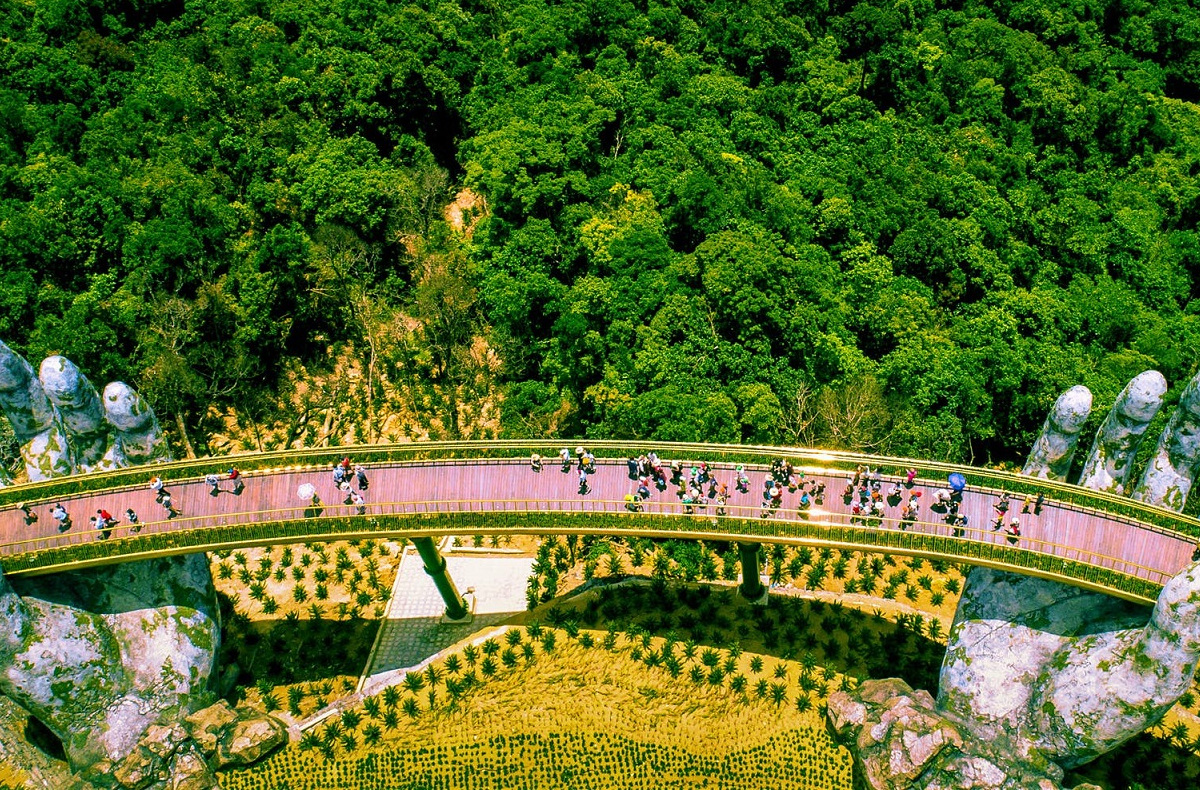






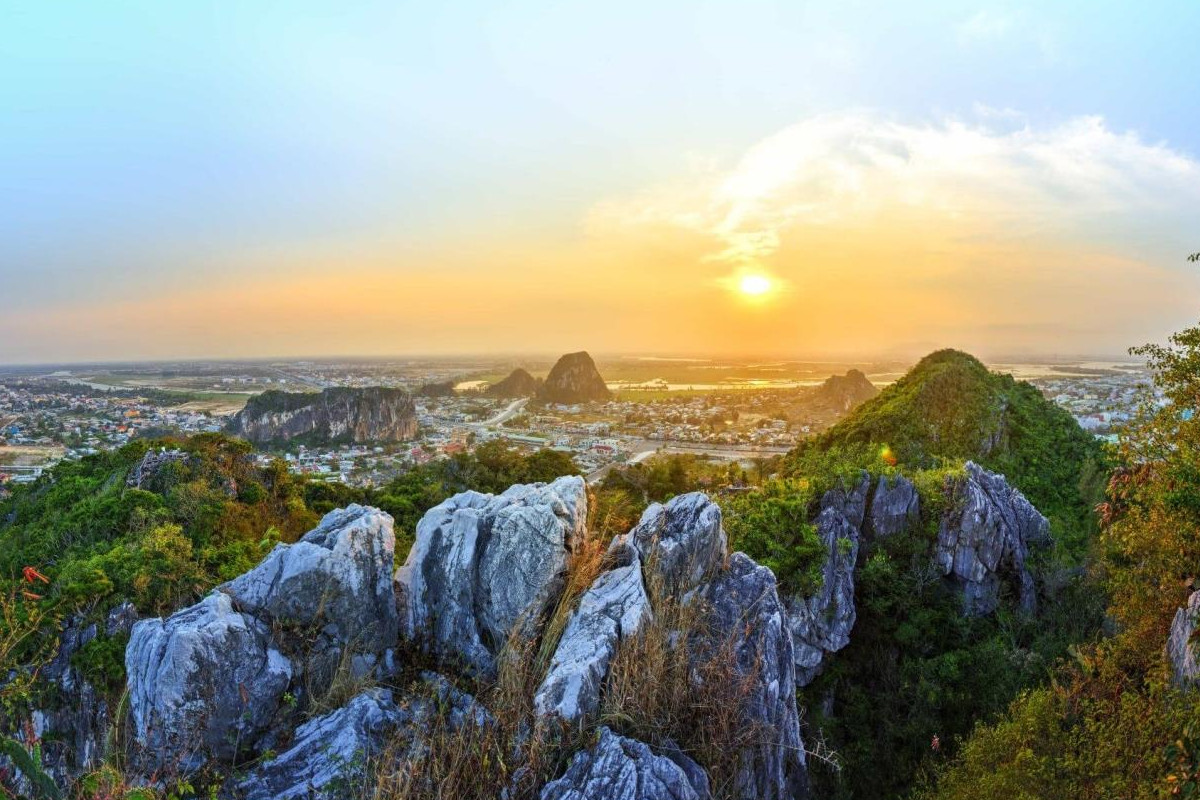




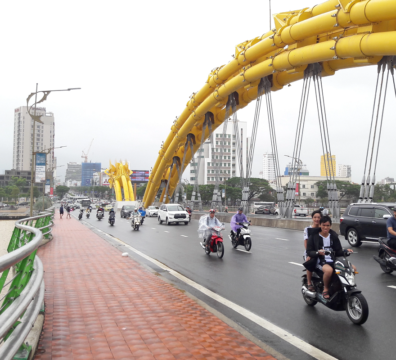



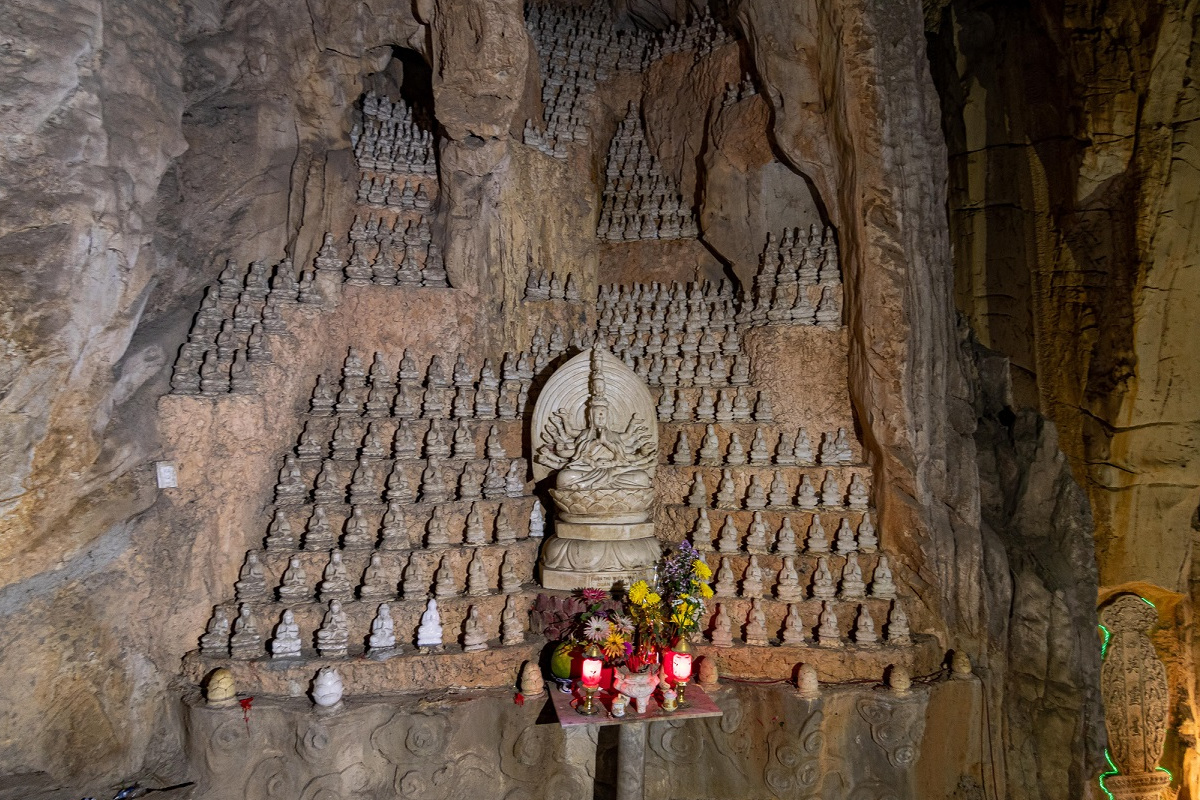









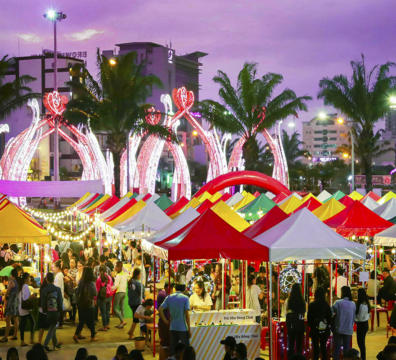
















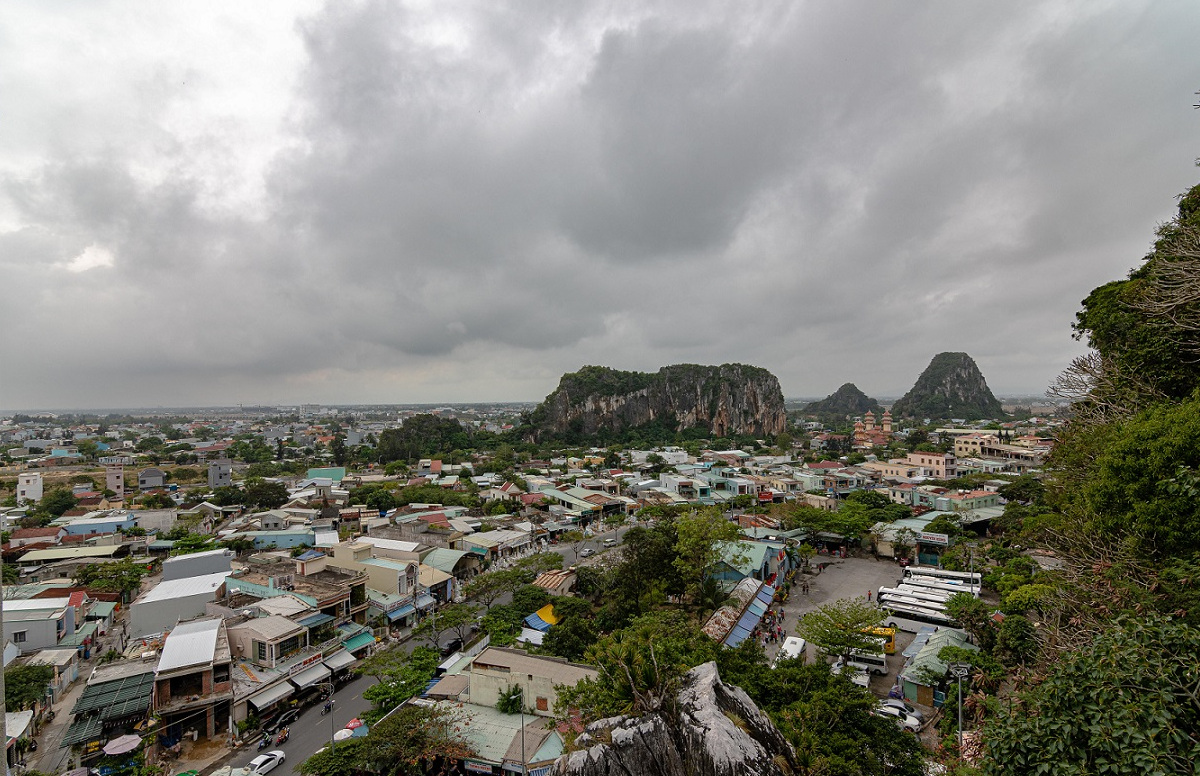
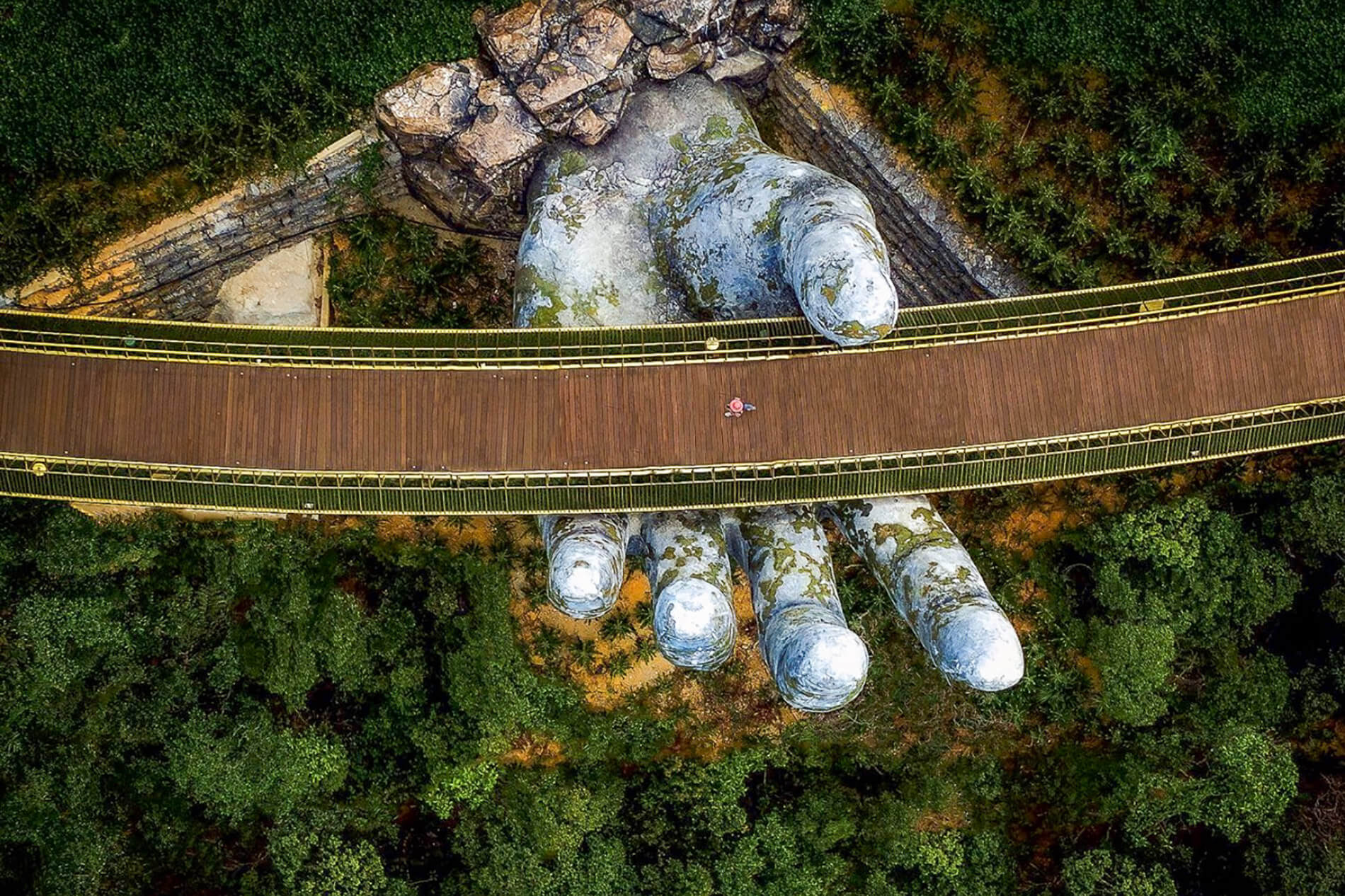

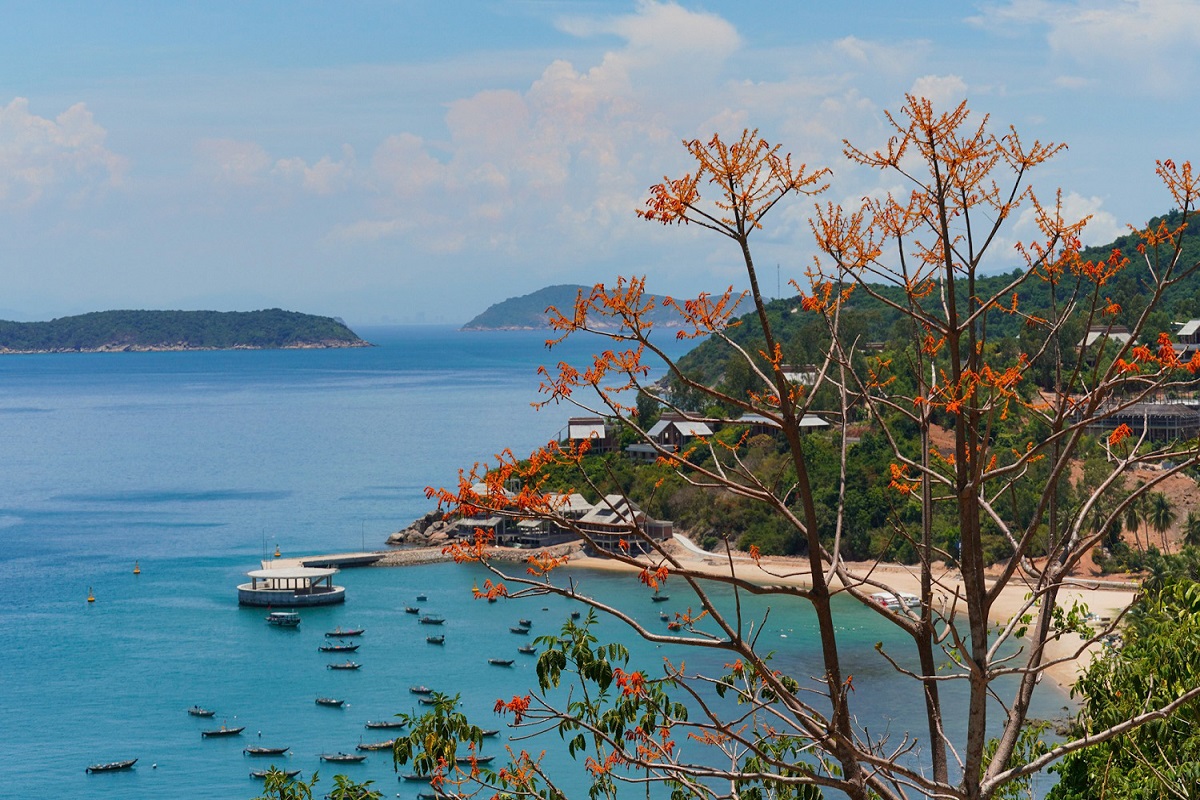






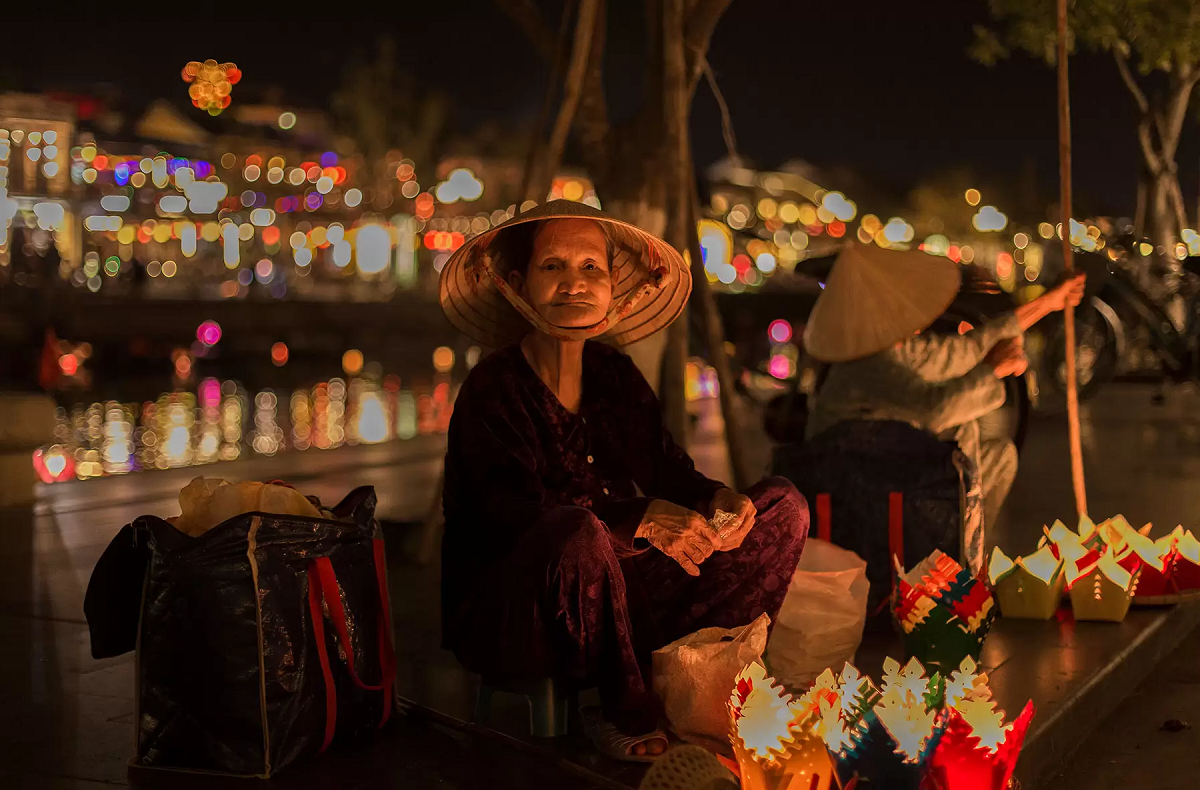

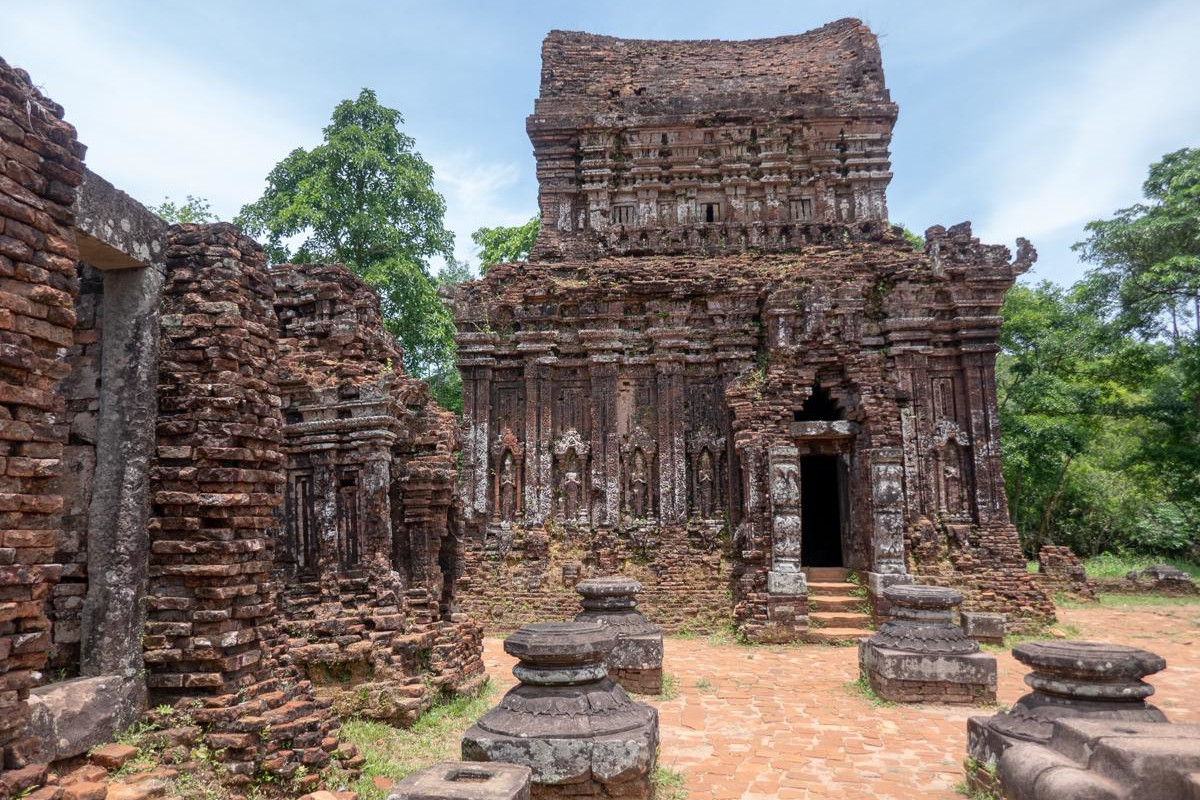

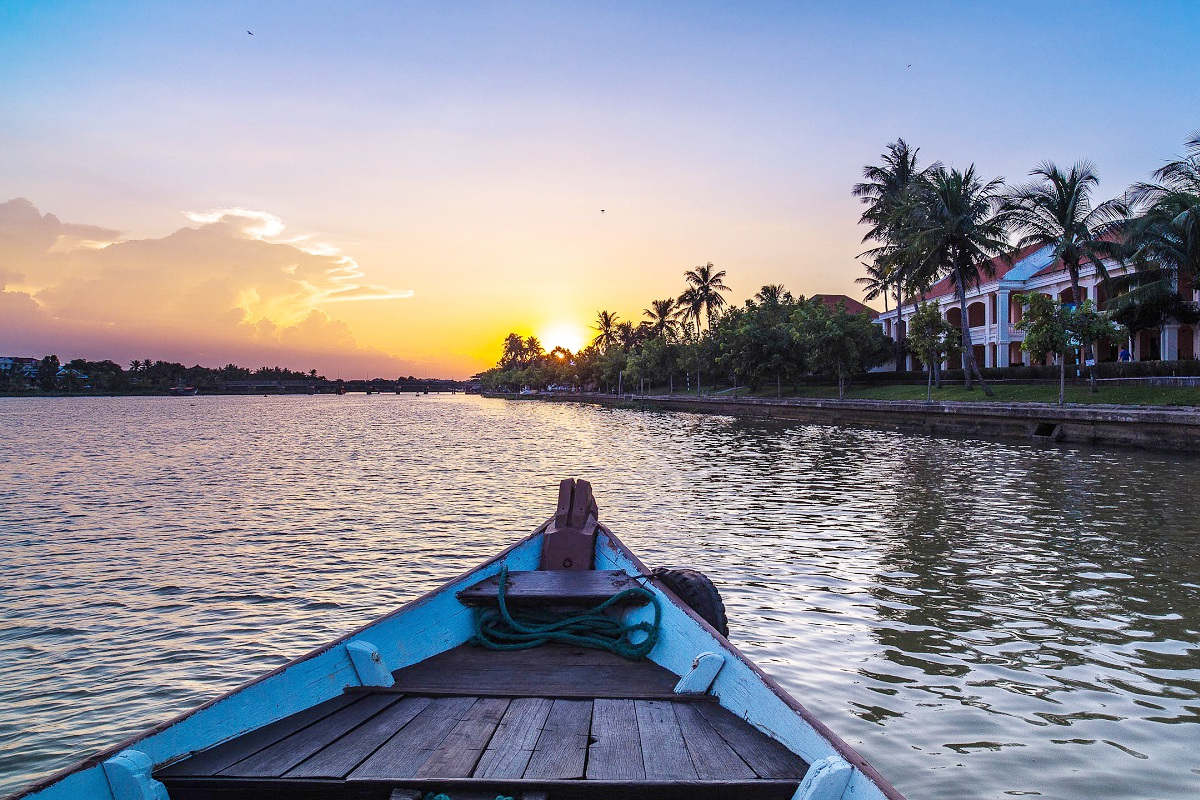




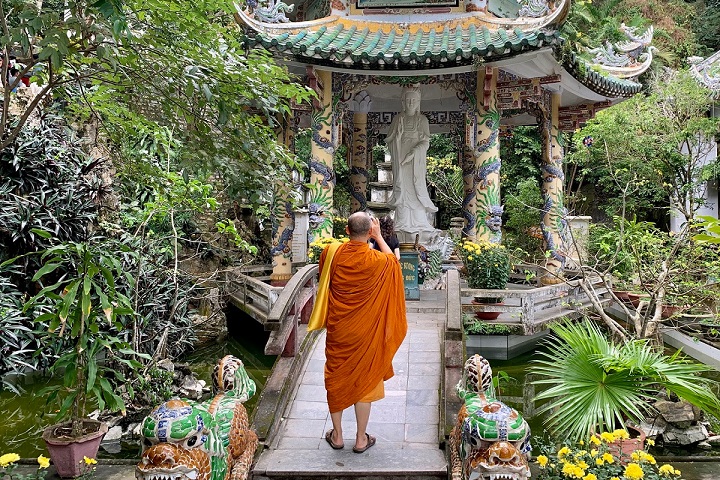












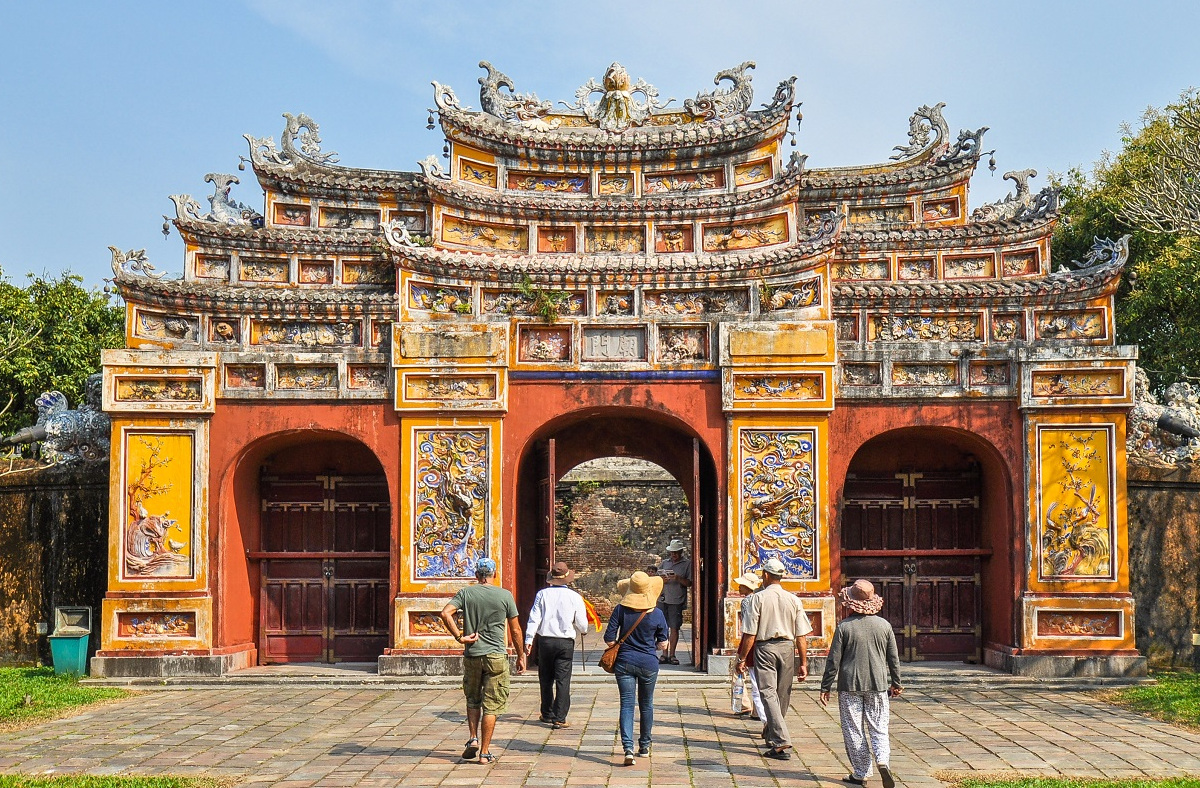








Leave a Reply